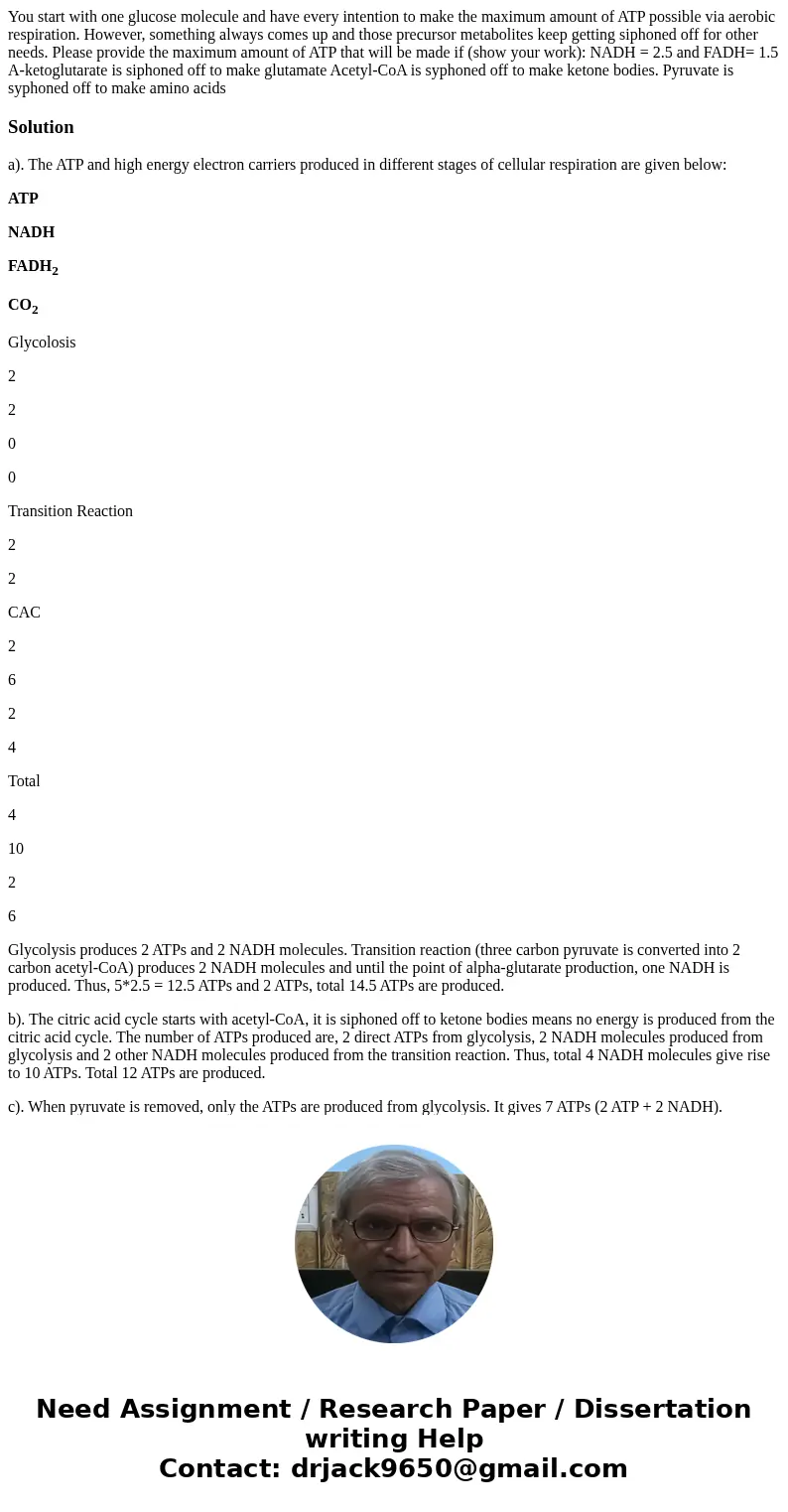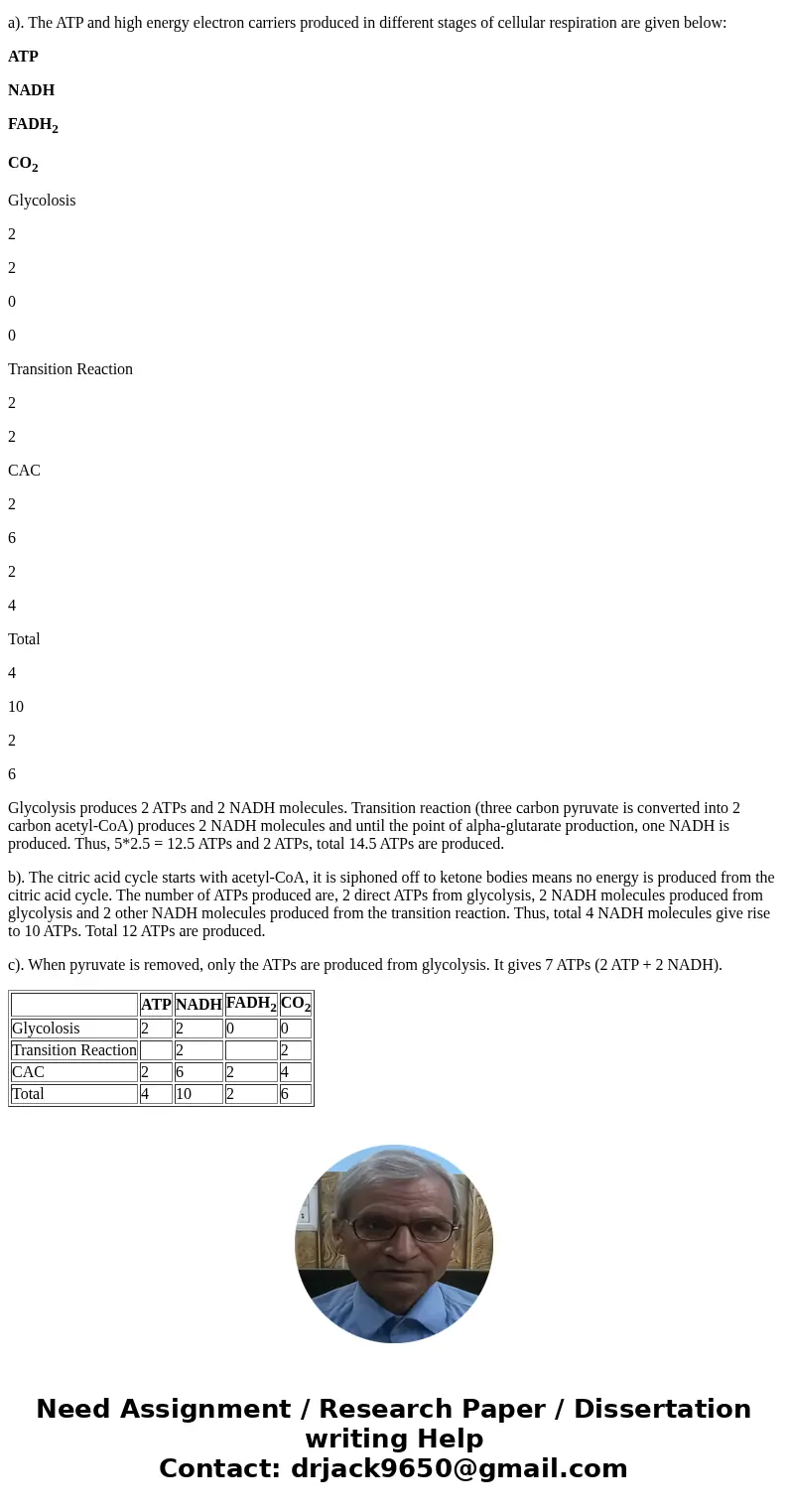You start with one glucose molecule and have every intention
Solution
a). The ATP and high energy electron carriers produced in different stages of cellular respiration are given below:
ATP
NADH
FADH2
CO2
Glycolosis
2
2
0
0
Transition Reaction
2
2
CAC
2
6
2
4
Total
4
10
2
6
Glycolysis produces 2 ATPs and 2 NADH molecules. Transition reaction (three carbon pyruvate is converted into 2 carbon acetyl-CoA) produces 2 NADH molecules and until the point of alpha-glutarate production, one NADH is produced. Thus, 5*2.5 = 12.5 ATPs and 2 ATPs, total 14.5 ATPs are produced.
b). The citric acid cycle starts with acetyl-CoA, it is siphoned off to ketone bodies means no energy is produced from the citric acid cycle. The number of ATPs produced are, 2 direct ATPs from glycolysis, 2 NADH molecules produced from glycolysis and 2 other NADH molecules produced from the transition reaction. Thus, total 4 NADH molecules give rise to 10 ATPs. Total 12 ATPs are produced.
c). When pyruvate is removed, only the ATPs are produced from glycolysis. It gives 7 ATPs (2 ATP + 2 NADH).
| ATP | NADH | FADH2 | CO2 | |
| Glycolosis | 2 | 2 | 0 | 0 |
| Transition Reaction | 2 | 2 | ||
| CAC | 2 | 6 | 2 | 4 |
| Total | 4 | 10 | 2 | 6 |


 Homework Sourse
Homework Sourse